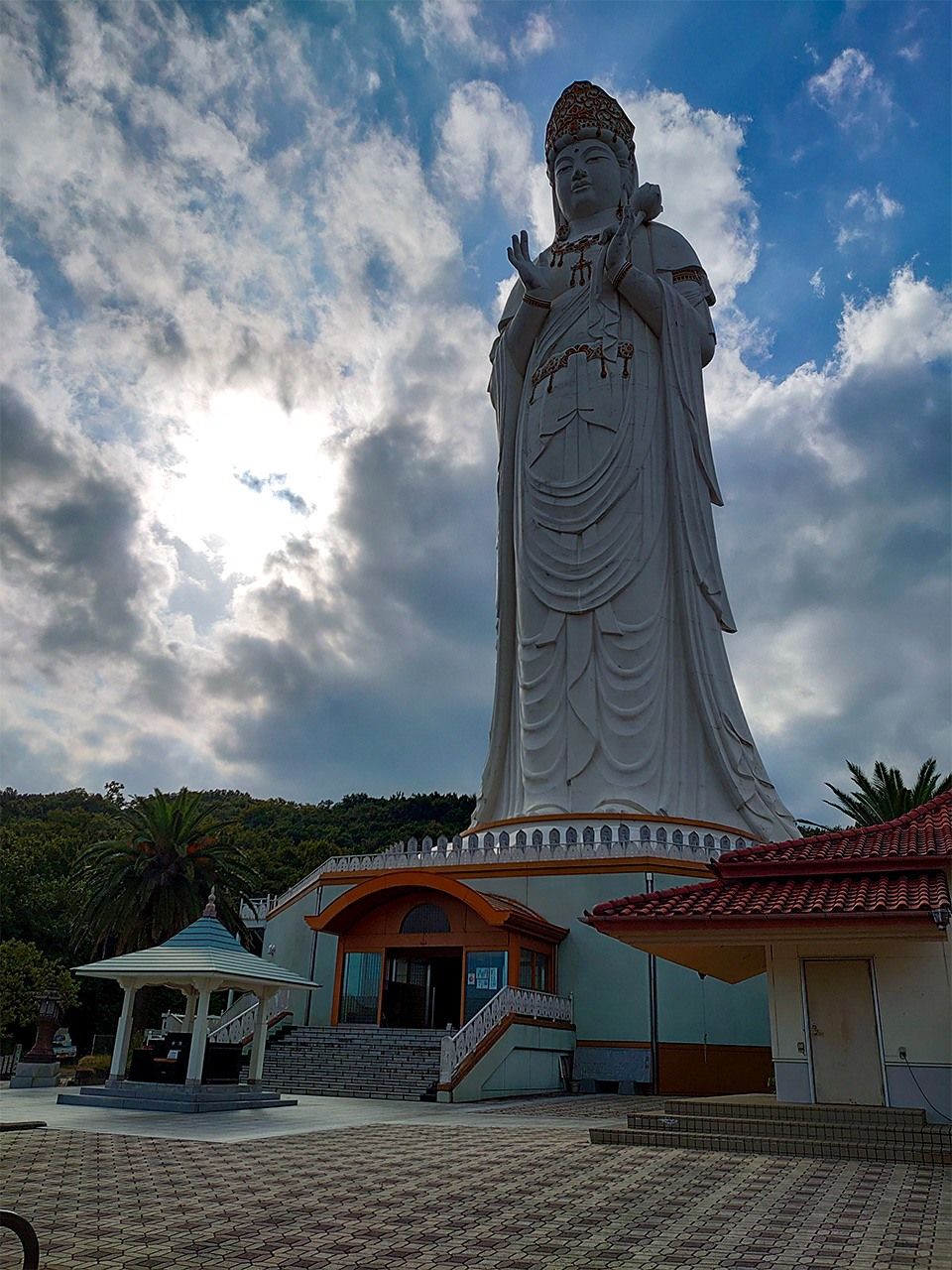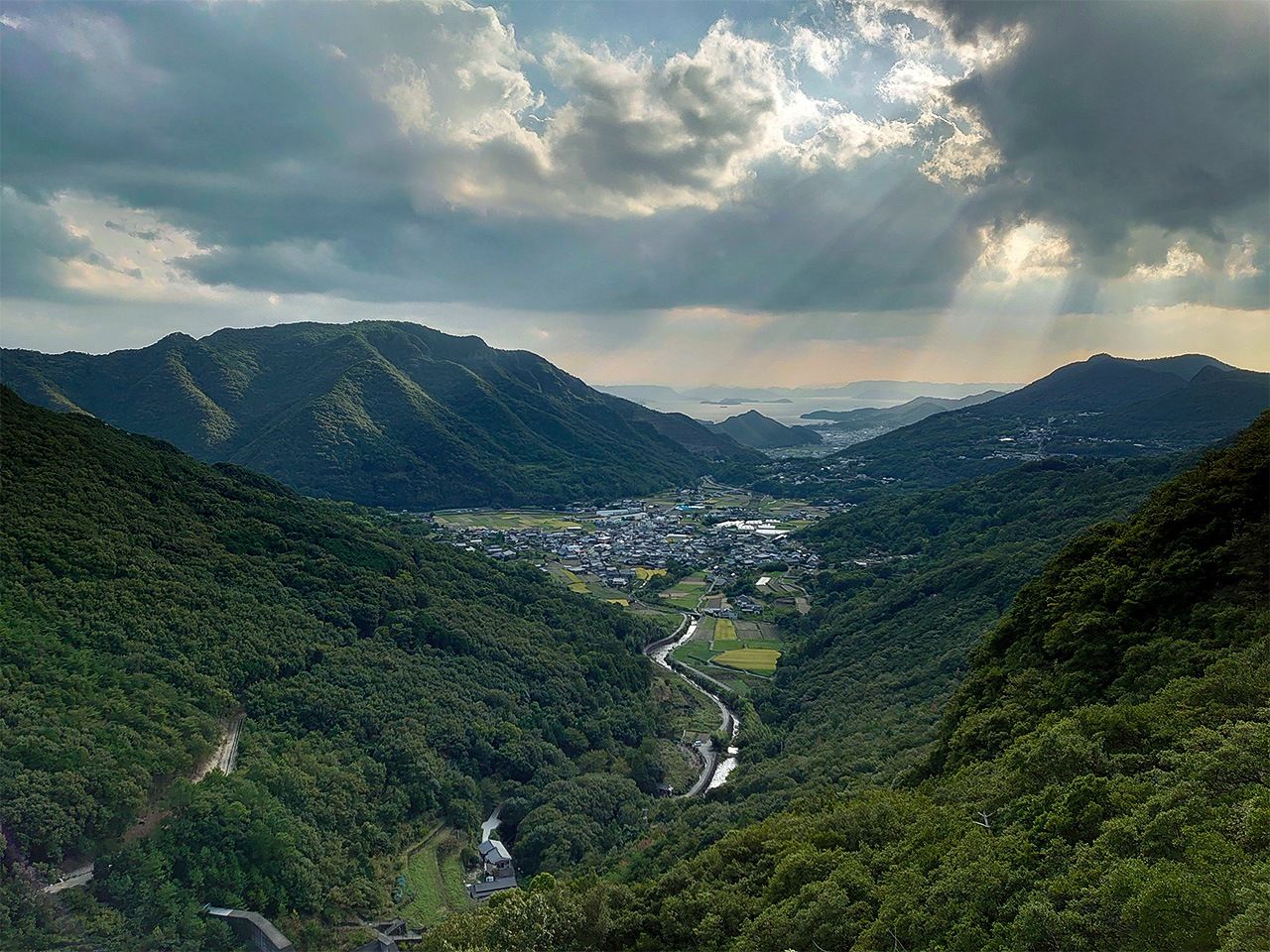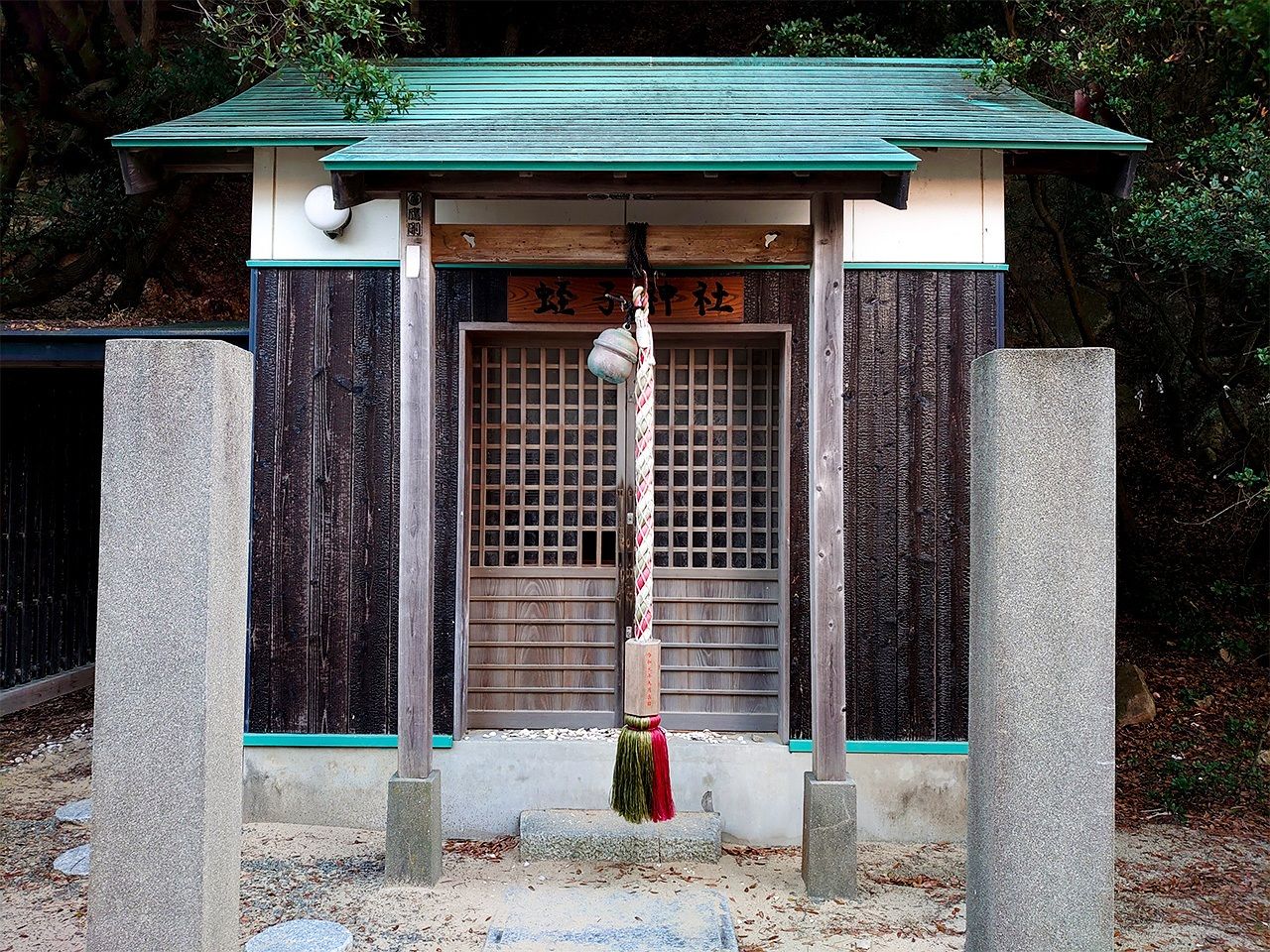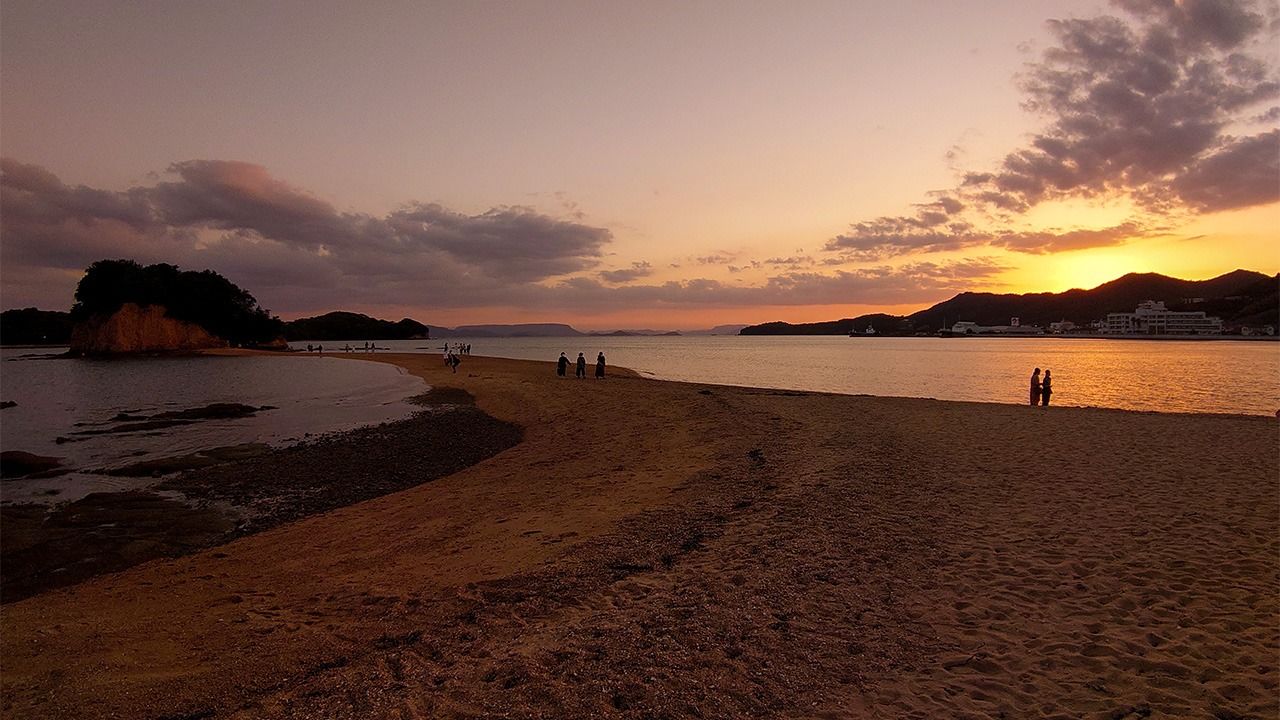
Ogres, Angels, and Deities in the Seto Inland Sea
Travel- English
- 日本語
- 简体字
- 繁體字
- Français
- Español
- العربية
- Русский
It was an hour by train from Tokushima to reach Takamatsu Station in Kagawa Prefecture. There is a ferry port within walking distance of the station where you can board ferries to many of the islands dotting the Seto Inland Sea to the north. These islands host the Art Setouchi Triennale every three years, and although I have done related translation work, I had never actually been to the sea. There are simply too many islands to visit them all, so I chose Megijima, which claims to be the Onigashima (ogre island) of the legend of Momotarō, and Shōdoshima.
Tourist Attraction Ogres
It is only 20 minutes by ferry from Takamatsu Port to Megijima, and Momotarō and the ogres soon make their appearance. Even the official guide map uses the name Onigashima, and there is a round-trip bus service from the port to the main tourist attraction, Onigashima Cave. The power of tourist money is evident.
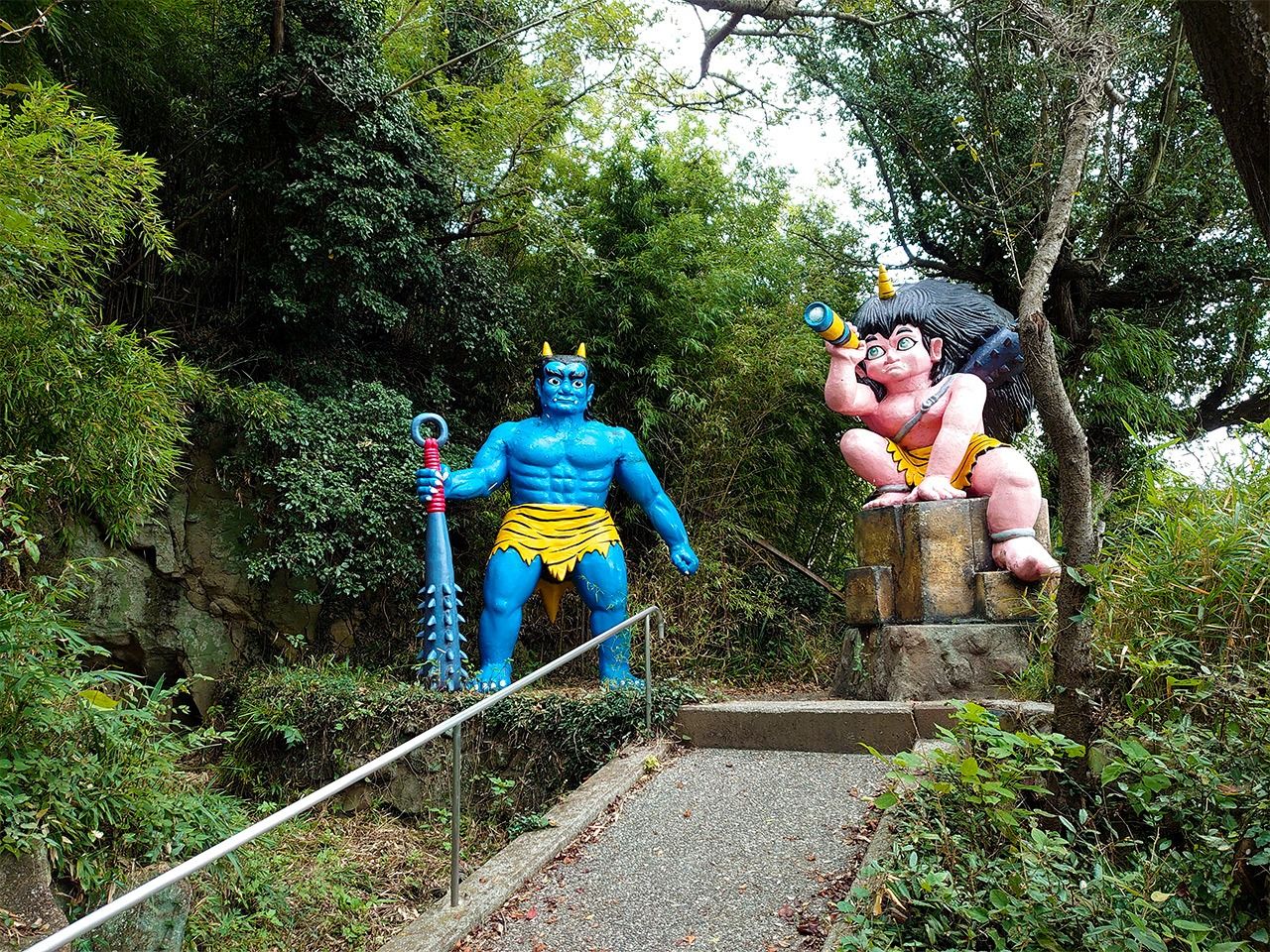
Such figures are found all over Onigashima/Megijima.
The interior of Onigashima Cave, the alleged den of the legendary ogres, looks like any other, except with signs and mannequins of Momotarō and ogres everywhere. It has several rooms with names like the “living room,” the “gathering room,” and so on. There is even a treasure room and a dungeon. The dungeon is fitted with iron bars with a mannequin of a captive woman inside, which is quite surreal. I walked through the chill, dim cave trying to work up some enthusiasm, thinking to myself “This is a place of legend! Momotarō came here!” Unfortunately, though, the legend of Momotarō is just that, a legend, and the idea that this island was home to ogres a pure fabrication. I could not bring myself to buy it. After all, there are islands all over Japan that claim to be the “true” Onigashima. There could not be that many, could there? Still, there was an information sign claiming that the cave was not natural but carved by hand, meaning that long ago someone actually did live there.
Stairs on either side of the entrance led to the top of Washigamine, the mountain over the cave, and it offered a lovely, wide-open view of the sea.

The dungeon room in Onigashima Cave.
Scooter Trip to the Unexpected
I soon headed back to Takamatsu Port, where I took another ferry to Shōdoshima. The ride took an hour, and I arrived at Tonoshō port at half past one in the afternoon. The clouds were thick, and the sky hazy. The area around the port was quiet, with hardly any travelers. I picked up a bite to eat at a convenience store, then set out.
I have had a driver’s license since I was 18 years old, but I have never actually driven a car on the road. I do not usually need to, because I live in Tokyo, but when I travel to rural areas or overseas where there are no subways or trains and few buses, I always feel the lack. Then I traveled to Yonagunijima, Okinawa, in 2019, and I learned from other tourists that you do not need a motorcycle license to drive a 50cc scooter if you have a car license. I used to ride a scooter a lot back in Taiwan, so that was not a problem at all. That meant I could get around and enjoy the scenery without worrying about bus schedules. Ever since, I have been hooked on touring islands by scooter. Japan is not really a motorcycle friendly place, and although car rental shops are relatively common, there are few places where you can rent a scooter or motorcycle. Luckily, there was one on Shōdoshima. It was a bit far from the port, so I took a taxi there.
Shōdoshima’s most famous sightseeing spot is probably Kankakei gorge. It is a magnificent river valley, and in late autumn the foliage makes an even more stunning sight, drawing crowds of tourists. However, I was there in early October, before the foliage hit its peak, and on a weekday to boot—there were almost no other sightseers, so no buses were running to Kankakei. My only choice was to get there on my own.
Using public transportation on trips leads to a kind of stop-start travel, with fixed legs for each journey. Even if you find yourself wanting to stop and explore along the way, you cannot just get off the bus whenever you want. Navigating yourself makes things much freer, and it is easier to encounter the unexpected. One of my unexpected encounters on Shōdoshima was the Shōdosihma Daikannon.
Androgynous Kannon
I followed the main street from Tonoshō toward the mountains. As I left the city center behind, houses and shops dwindled, and cars became infrequent. Suddenly, I was faced with a towering, chalk-white statue of the Kannon Boddhisatva. The statue stood to the left side of a hill, swathed in robes, a benevolent expression on their face. One hand is making a sign, and the other holding a flower.
In early Buddhist doctrine, Kannon was personified in a male body, but as Buddhism spread through China and Japan, Kannon transformed into a feminine being of universal compassion. In other words, Kannon is a being that has transitioned, existing as male or female in different times and different places. I found myself fascinated by that androgynous existence. I am not a religious person, and am by no means deeply educated in Buddhism, but I felt compelled to look closer at that spectacular statue that appeared before me.
The road to the top of Kannon’s hill was unpaved and rough, making it difficult to keep the scooter upright. When I reached Kannon’s feet, I realized that the statue actually held a temple, called Busshiji. The temple is open to visitors, and there is an elevator to the top floor, where an observation deck offers a view of island scenery. I love high places, so I could not pass up the opportunity.
There were no worshippers or tourists present, perhaps because it was a weekday afternoon. The first floor had a document archive, and nearby was a stand selling a variety of incense. The red carpeted altar room deeper inside was filled with dim golden light, and a pure white statue of the Kannon stood in the center of the altar. The atmosphere was quite solemn. There was a giant string of prayer beads in one corner of the altar room, labeled “Great Prayer Beads of Happiness, Guinness World Record Challenger for Largest Prayer Beads.”
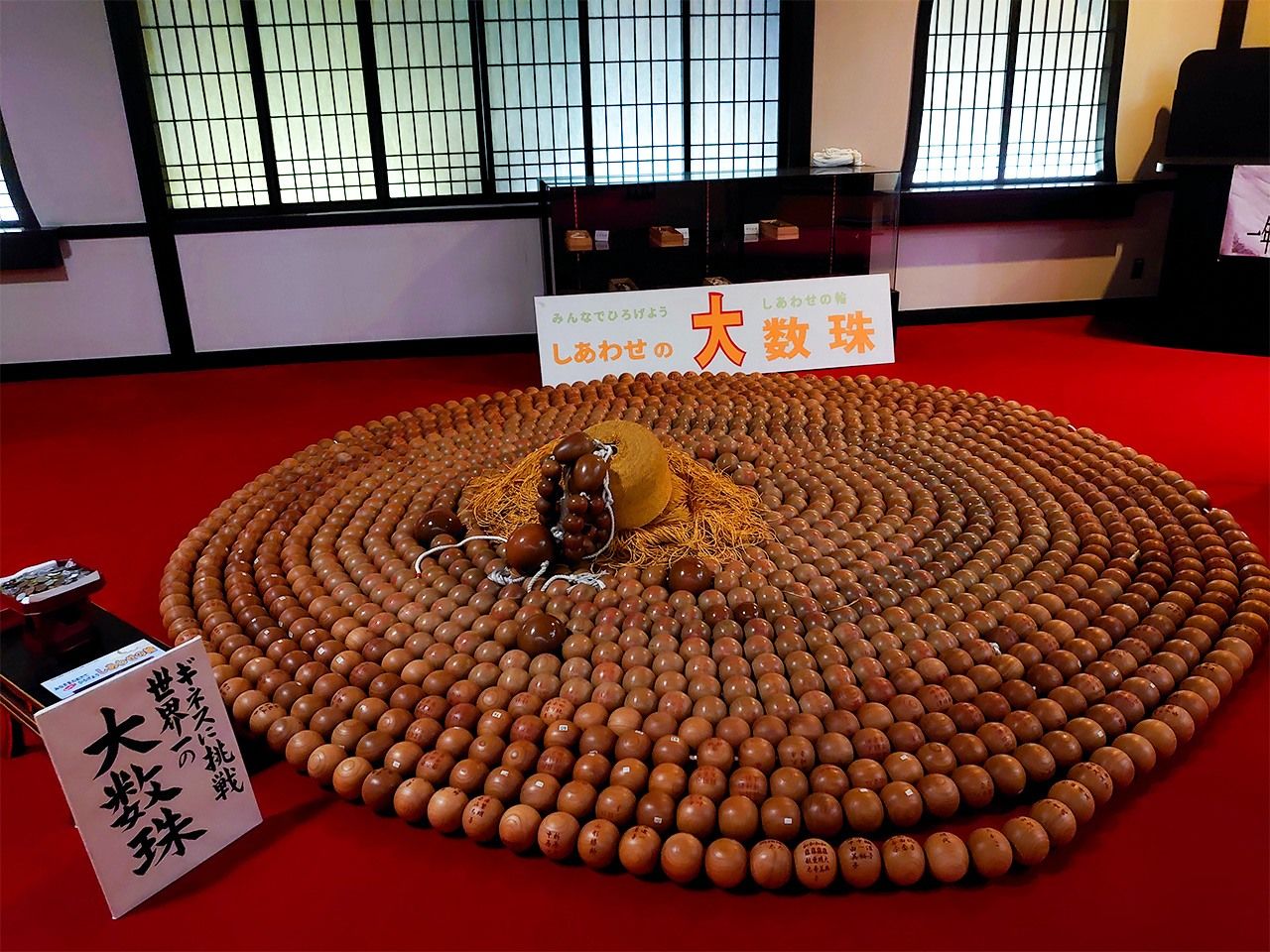
Great Prayer Beads of Happiness.
The light dimmed even more as I went further inside, and countless gold-plated nesting Buddha figures lined both sides of the solemn passageways. I guessed they were all offerings from the faithful. The area near the ceiling was illuminated with blue light, and there was a faint melody, like sacred Buddhist sutras set to music. There was no other sound. The quiet made me nervous to walk, or even breathe, for fear of breaking the silence.
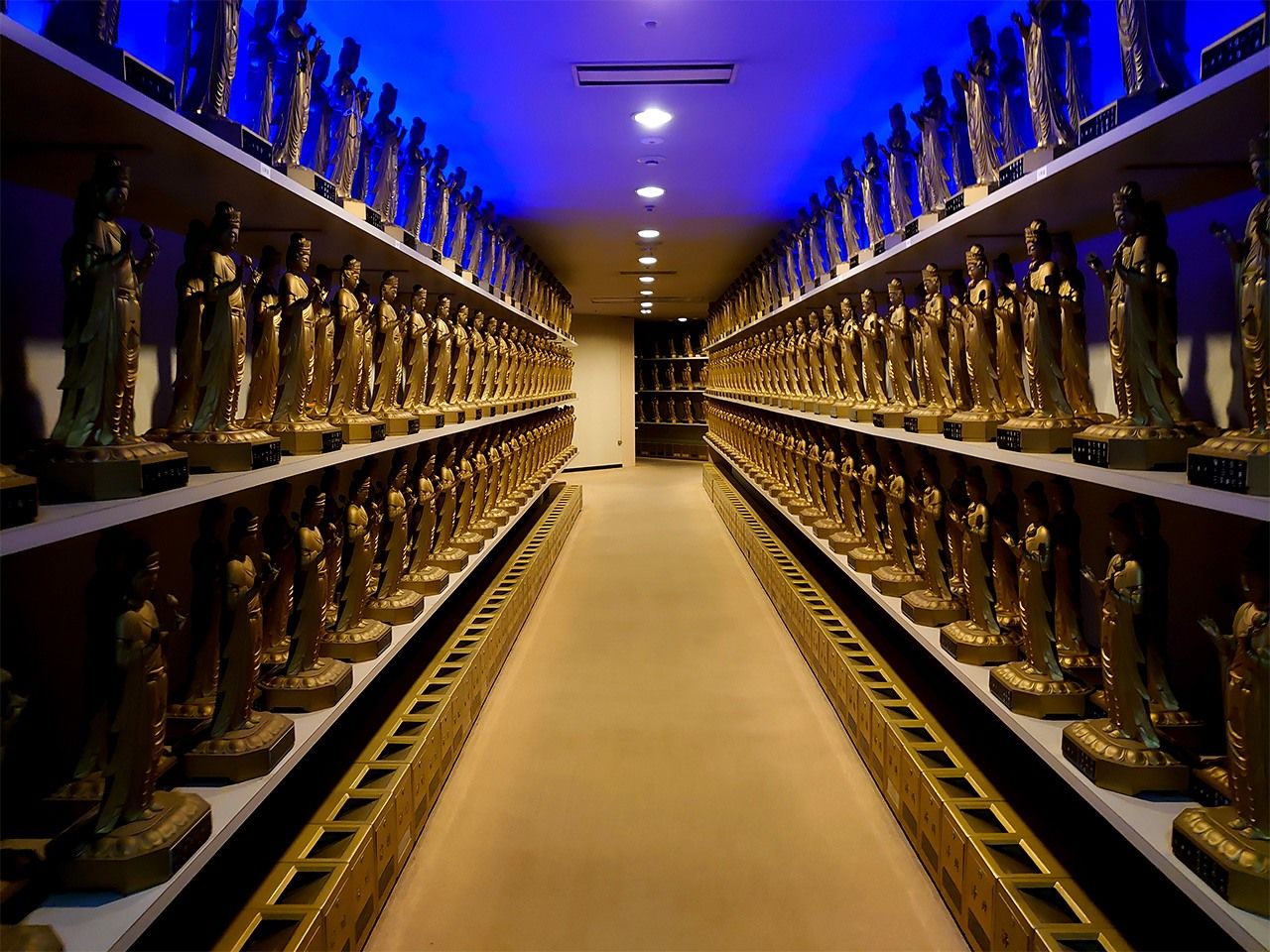
A passageway lined completely with nesting Buddha figures.
There was an elevator up to the thirteenth floor, and from there, a spiral staircase of 54 stairsteps led up to a room called Shakaden, or Buddha Hall, where they have enshrined a tooth of the Buddha. There was a panel here that finally unveiled the history of the massive statue. The Daikannon was completed in 1994, and it was built after Dalada Maligawa temple in Kandy, Sri Lanka donated the tooth. In other words, the statue only exists to hold a temple to enshrine that relic.
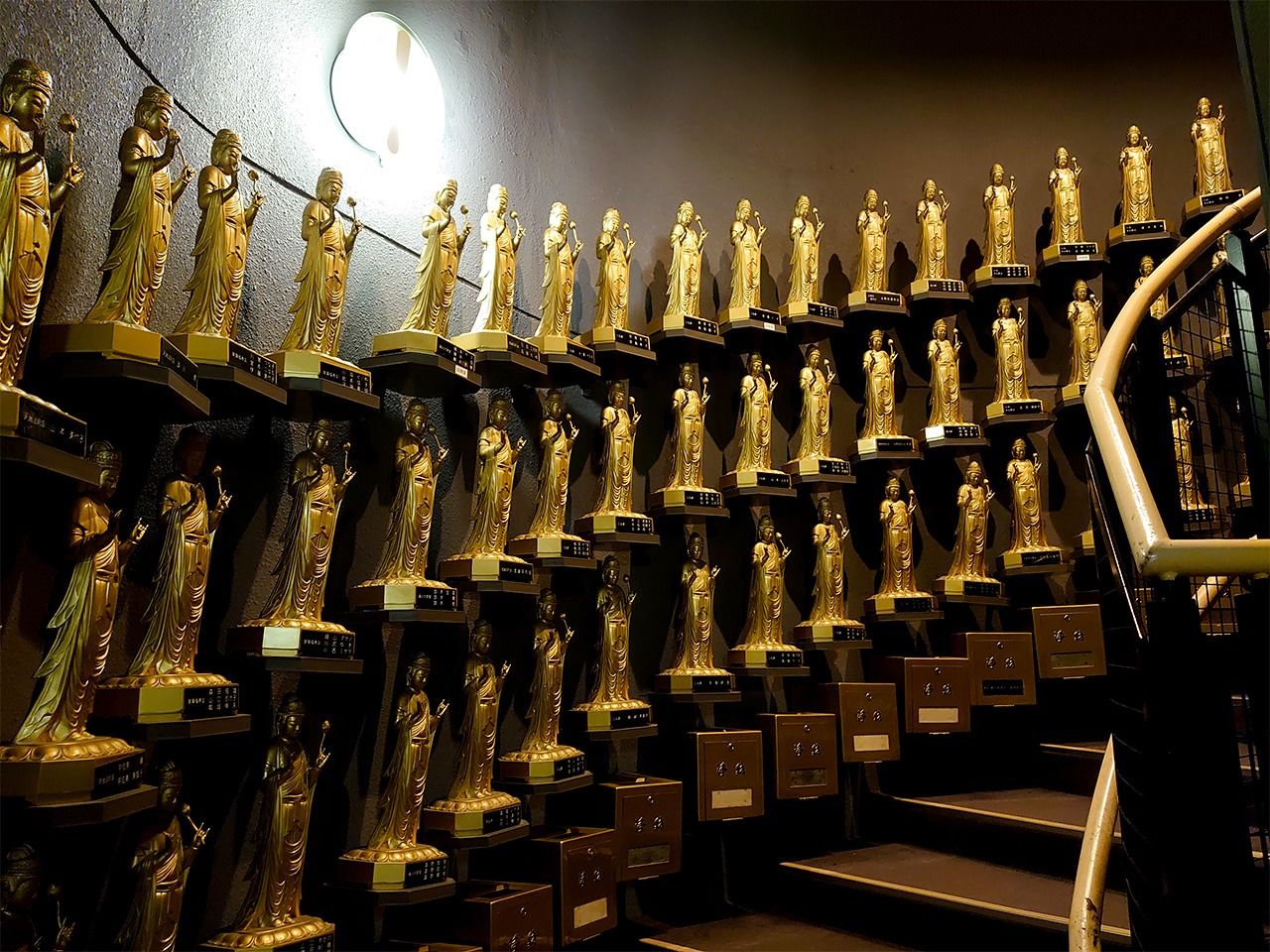
The spiral staircase to Shakaden is lined with statues and filled with a solemn air.
The hall also displays a message from the Sri Lankan President Ranasinghe Premadasa. The temple was born from connections to Sri Lanka, but the architecture lacks any clear influence from that country’s Theravada Buddhism in favor of Mahayana design. There are three windows on each of the north and south walls of the Shakaden. They are there for light, but also offer a view. One side shows the deep green of forest, while the other looks out over the blue of the Seto Inland Sea. My walk through the solemn hallways filled with Buddha statues had felt like an anointing, and now the green and blue natural scenery seemed to cleanse the heart. I found myself truly glad I had stumbled on this Daikannon. The windows, by the way, serve as jewels on a chain adorning the statue’s chest.
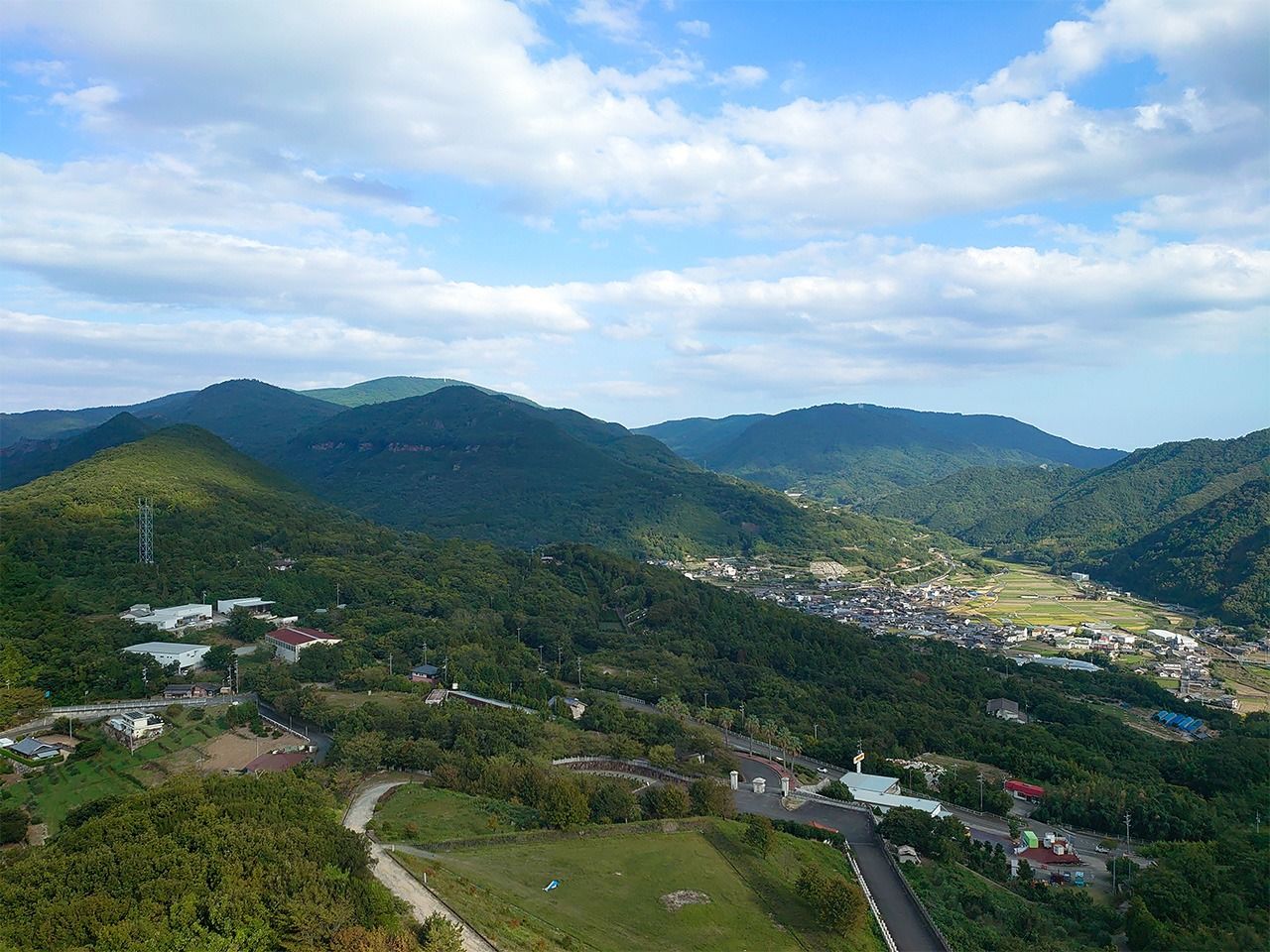
Island scenery from the windows of the Shakaden Buddha hall.
Guided by Angels
I left the Daikannon and continued on, using Google Maps to guide my scooter towards Kankakei. The slope grew steeper as the town fell behind me, and the road began to wind as it climbed, becoming a mountain road in earnest. At one sharp curve, a scene opened up that captured my eye, and I decided to stop the engine and look for a while. The sky was dim and filled dark grey clouds, but a sudden break in the clouds let sunlight spill through. Beams of light fell on the verdant plain and mountains towering around it, like some kind of divine revelation. I recalled that these sunbeams are often called “angel’s ladders” in Japan, and the thought made me smile. I had encountered ogres, a boddhisatva, and now angels. This was truly a spiritual day.
I went on my way again, but began to feel uneasy. It struck me that I had driven much farther than I should have. I stopped my scooter at the side of the rode and took out my smartphone. Google Maps showed my mistake. My original plan had been to go to the base of the gorge and then take the rope gondola to the top of the mountain, but I had actually set my destination to the top of the mountain. I had already reached the middle of the slope, so it made no sense to go back down.
I pushed on to the summit, my scooter barely making 30 kilometers an hour even at full throttle, and finally reached the peak above the gorge. I was the only tourist; the station and shop were empty. The observation deck offered a faint view of the distant port at , and much further off the islands dotting the Seto Inland Sea. The gorge is famous for beautiful scenery, and there are famous spots scattered around with fascinating names like Gyokujunpō (Bamboo Shoot Peak) or Sōundan (Layered Cloud Altar) that I would have liked to explore. I was getting tired, though, and it was already half past four in the afternoon, so I decided to head to my next destination and hurried down the mountain. I left the faint colors of Kankakei behind, hoping someday to return.
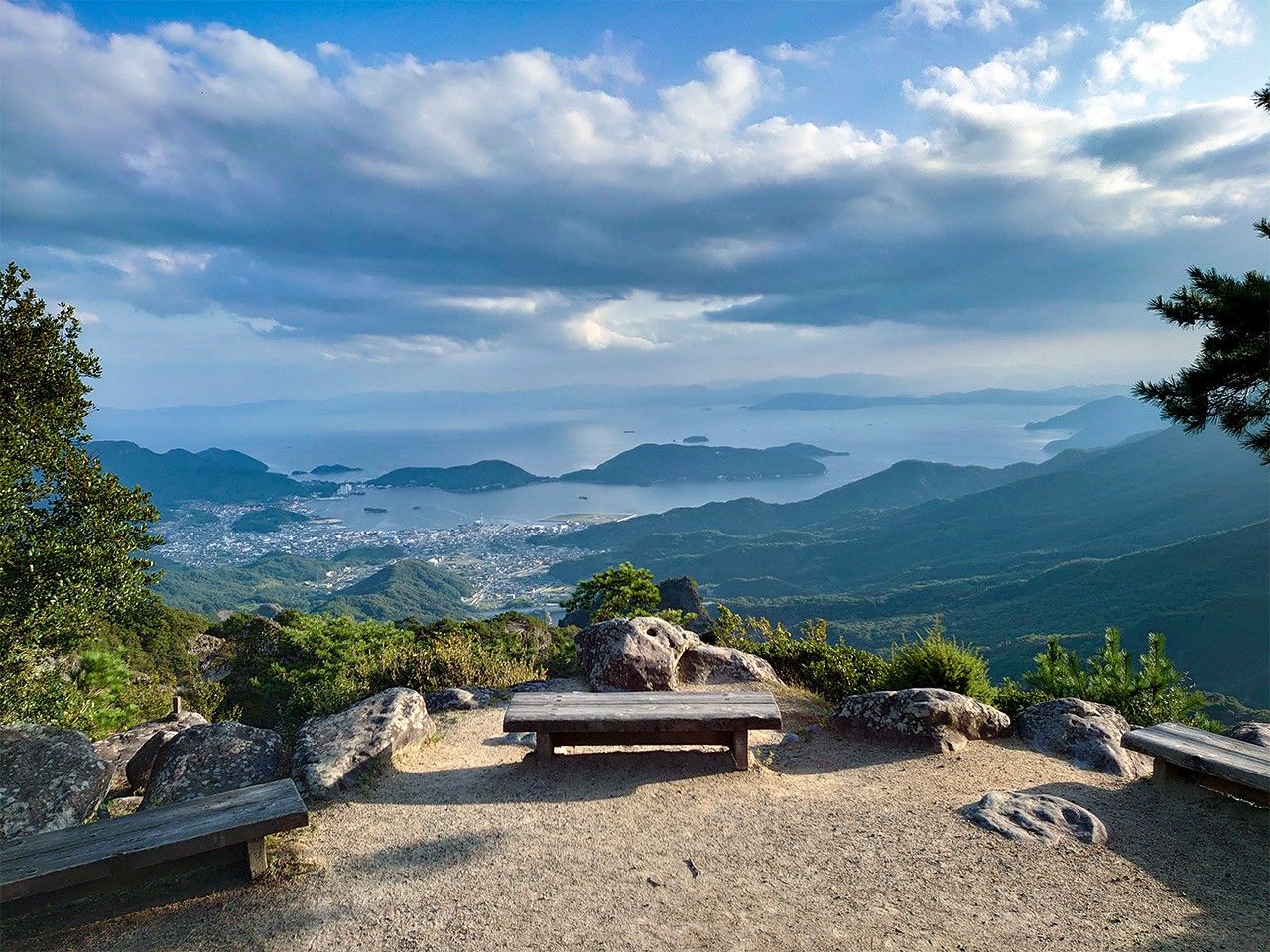
The view from the peak above Kankakei.
Of course, it was faster to get down that it had been to get up, and I was back in Tonoshō before I knew it. My next destination was Angel Road, there in town. Angel Road is a narrow stretch of sand bar that leads to a small island opposite the beach. It is revealed only at low tide, twice a day. I rushed down the mountain to make it in time for the tide, and in time to see the sunset there.
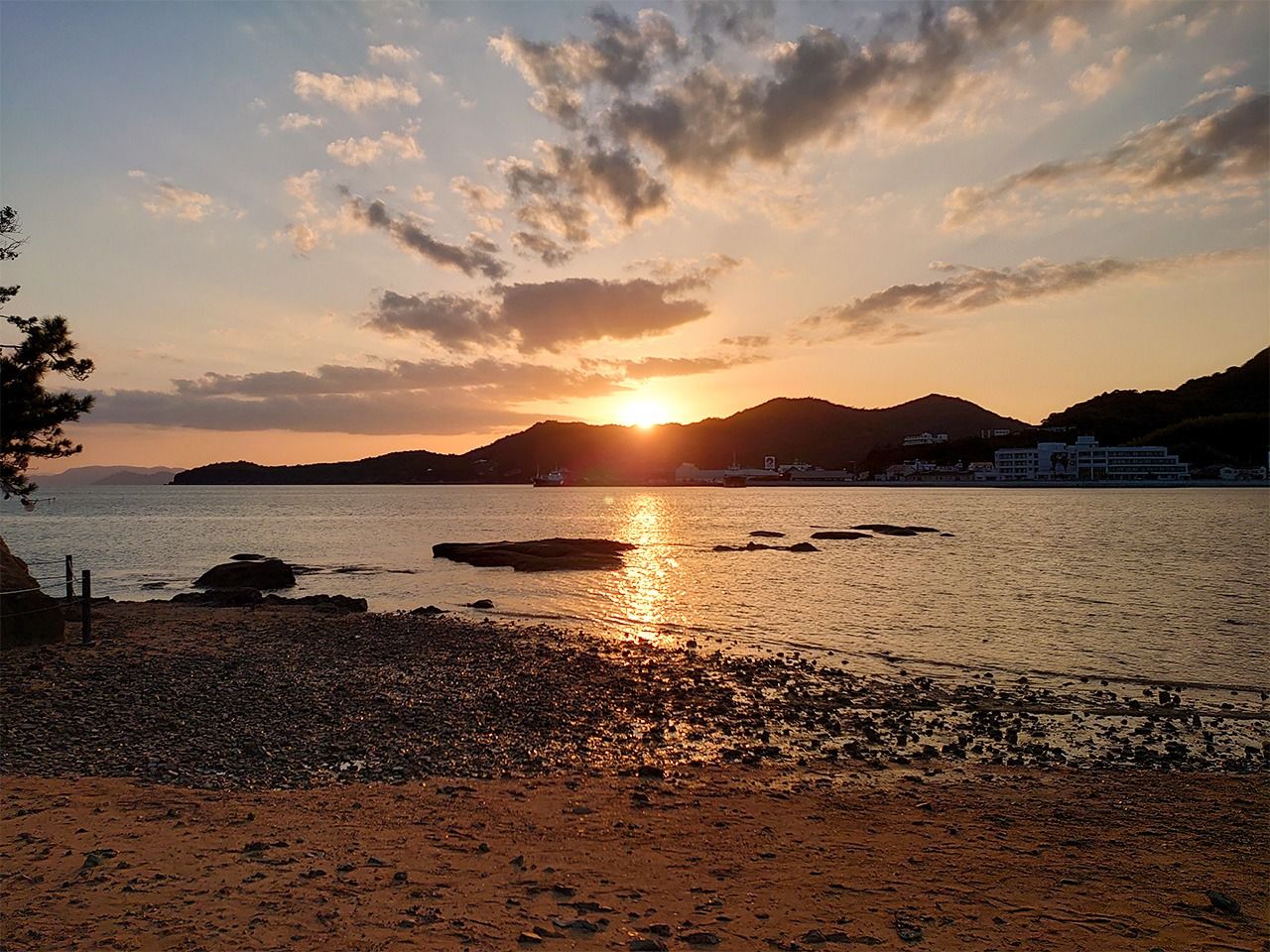
Solitary Pleasures of Romantic Angel Road.
Solitary Pleasures of Romantic Angel Road
Unlike at Kankakei, there were sightseers scattered around Angel Road, and most were young. A group of young women traveling together stood talking nearby, and even though I had no intention of eavesdropping, the sea breeze carried their voices to me. One said, “Next time I want to come with a man!” I understood what she meant. This place has earned a reputation for strengthening romantic bonds, beyond the simple beauty of the scenery. Even for folks like me, though, without any friends or loved ones by your side, there is plenty to enjoy. The scenery is perfect for pictures, and watching the sun set quietly behind the mountains beyond the sea is a treat.
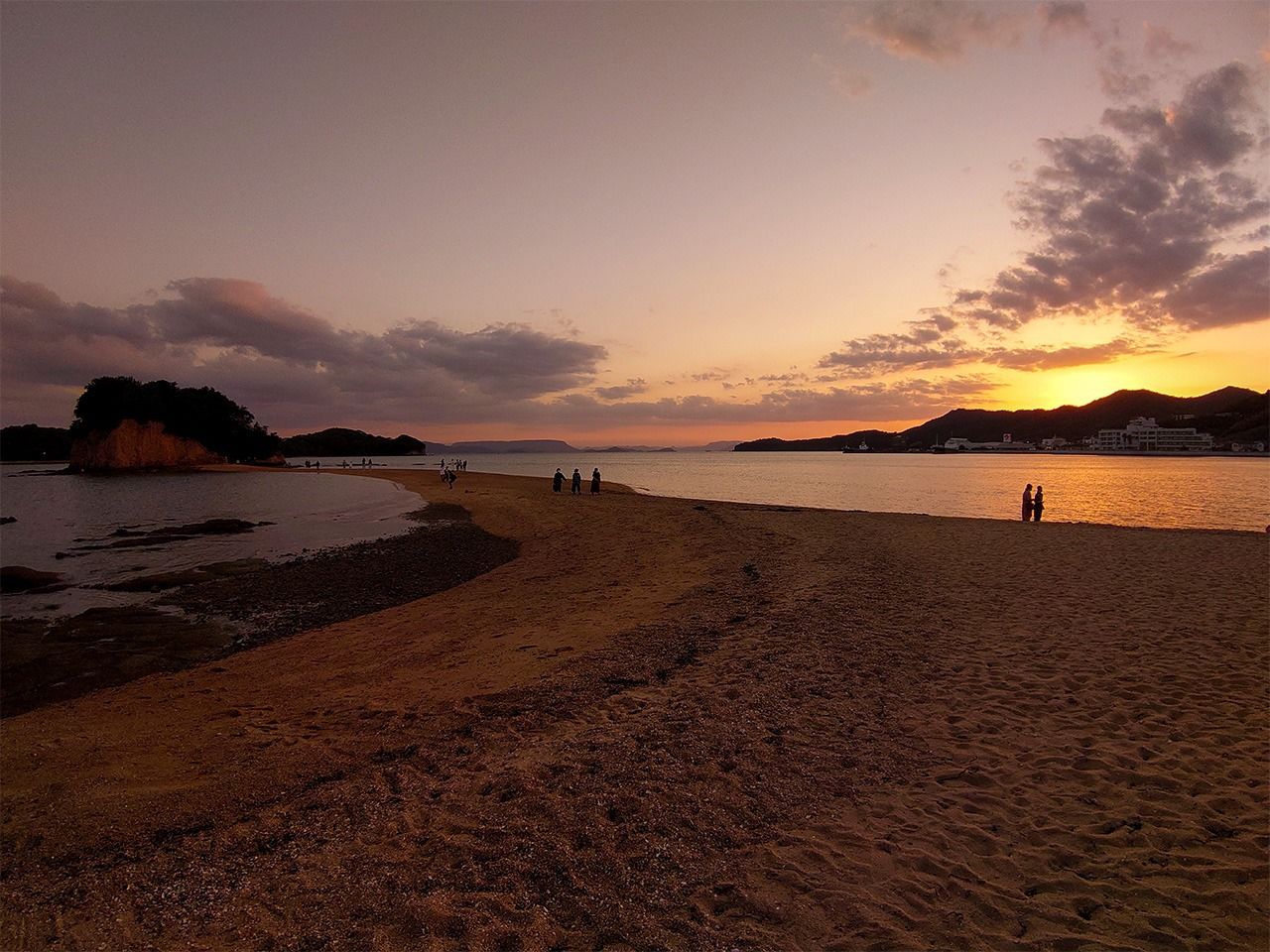
Angel Road, visible only at low tide.
There is a small, unobtrusive shrine near Angel Road, called Ebisu Jinja. In the Kojiki, Japan’s oldest history, the sibling deities Izanagi and Izanami who created Japan’s islands also gave birth to the gods and goddesses of Japan. Their first child, though, was born with a problem because the goddess Izanami approached Izanagi rather than waiting for him to approach her. That child was Hiruko. In the original text of the Kojiki, Hiruko is described only as “poorly,” but later generations interpreted that to mean he was somehow deformed. Whatever the case, the sibling deities put Hiruko into a reed boat, and cast him adrift on the sea.
The first time I read this myth, I remember feeling deep indignance. There is a strong sense of misogyny in the story, not to mention the indecency of parents abandoning their newborn simply because they found him unpleasant. That Ebisu Shrine near Angel Road stands out of the way, skulking in a way fitting the worship of an abandoned, deformed god. I wonder if they truly did enshrine poor, mistreated Hiruko there. When I read more afterward, though, I found that in later generations the Hiruko of the Kojiki become conflated with Ebisu, the deity of luck and bounty. So now, worshipping Hiruko is the same as worshipping Ebisu, I assume. If that is the case, then that Ebisu Shrine may not be dedicated to a poor, unfortunate god, but a god of good fortune and wealth.
The autumnal equinox had passed, so the days were getting short. The twilight sky was already darkening when I returned my scooter to the rental shop and took a taxi back to the port. It was deepening into night as I boarded the ferry back to Takamatsu. Apart from a few lights around the port, the whole world was dark. Nothing, perhaps, changes as much between day and night as the sea does. The daytime sea is a beautiful glittering blue, but when the light goes it becomes a depthless black. The quiet whisper of the waves transforms into the low growling of an unknown beast. The ferry left port on schedule, and slid out into the darkness of the nighttime sea. I looked back at the distant harbor lights and said a silent goodbye to that island of gods.
(Originally published in Japanese. Banner photo: Angel Road, visible only at low tide. All photos © Li Kotomi.)
Shikoku Seto Inland Sea Takamatsu Shōdoshima Momotarō Li Kotomi
